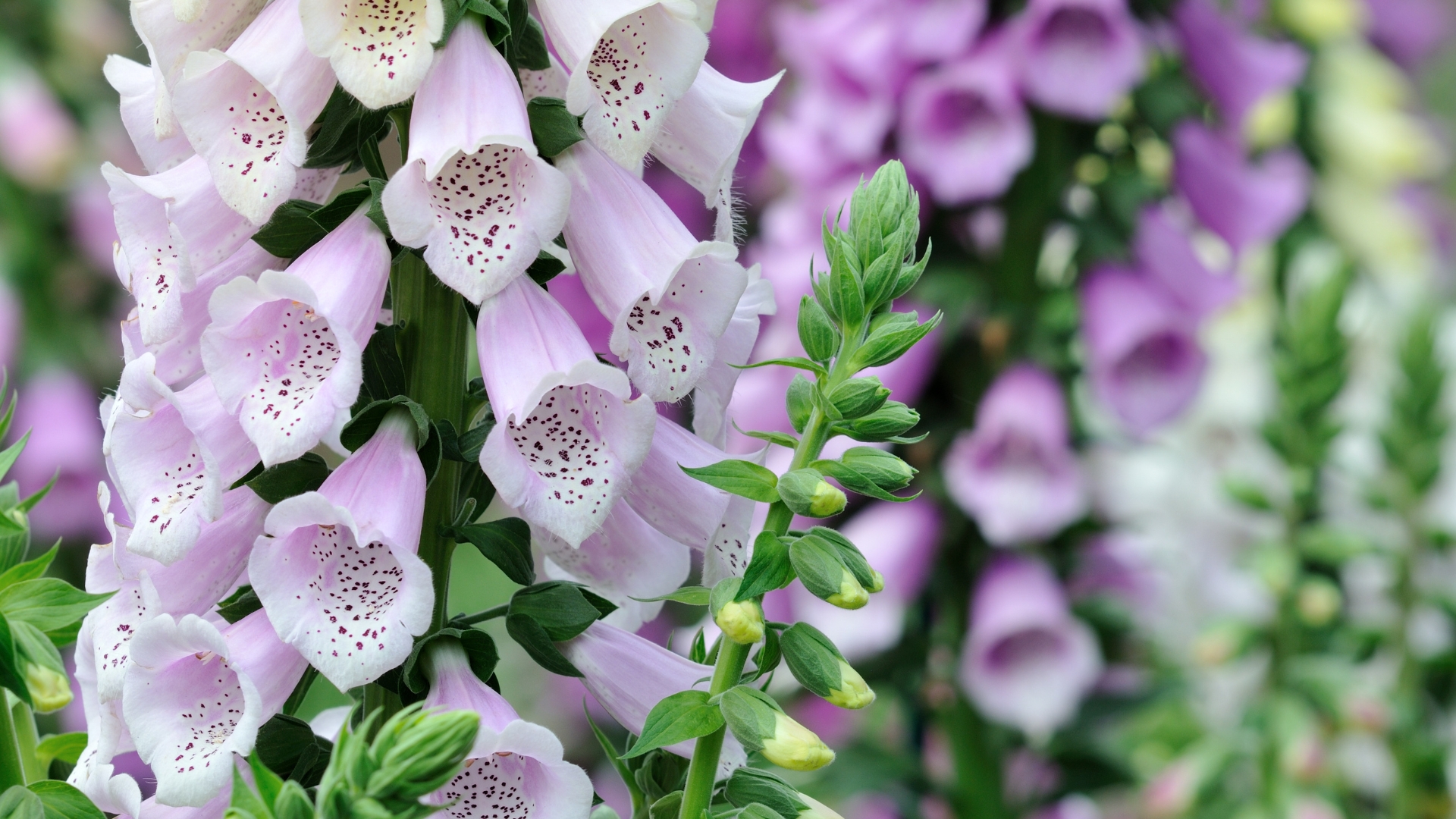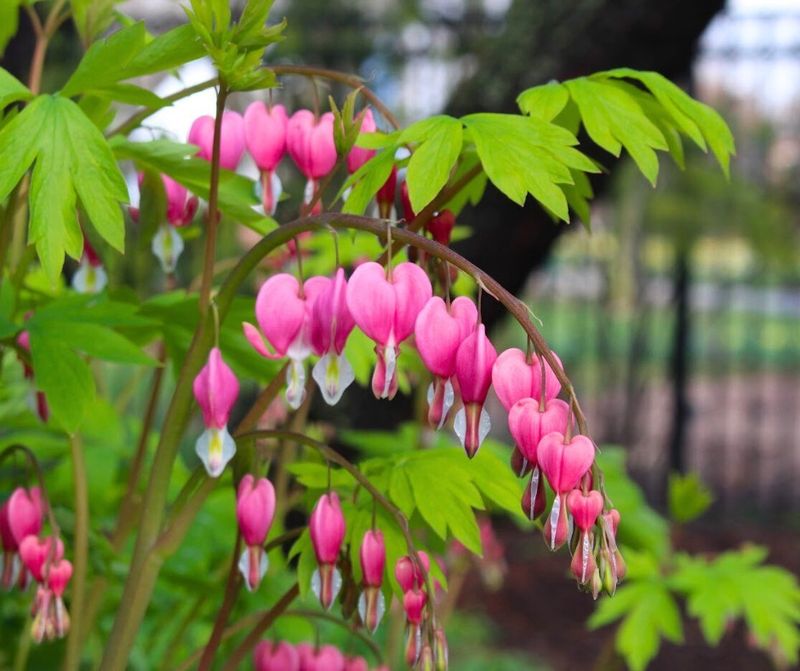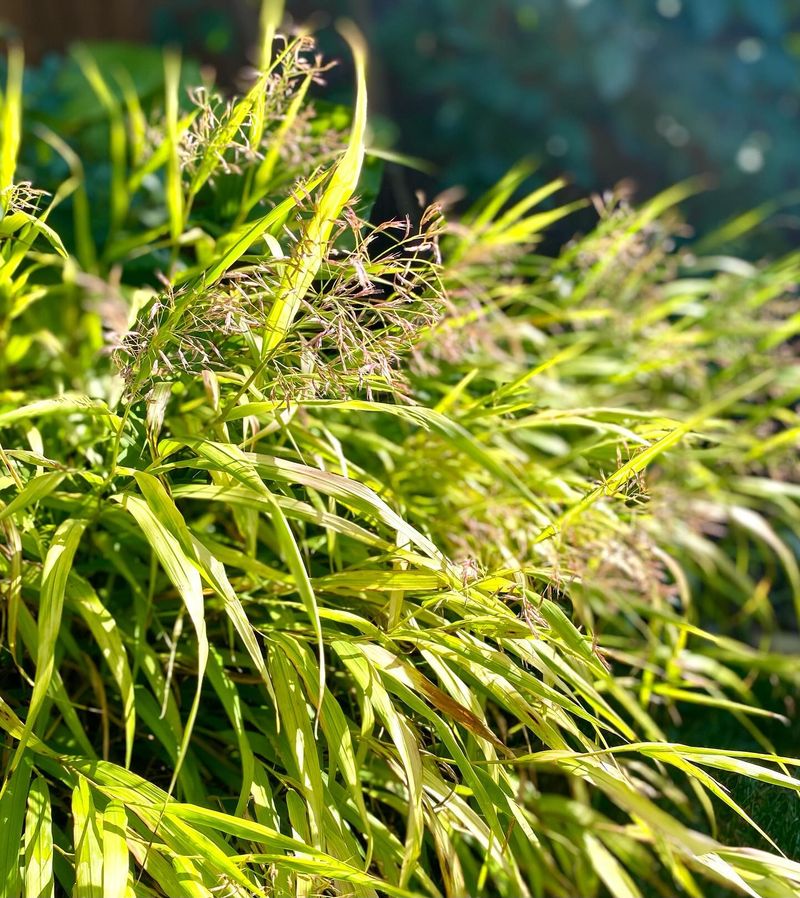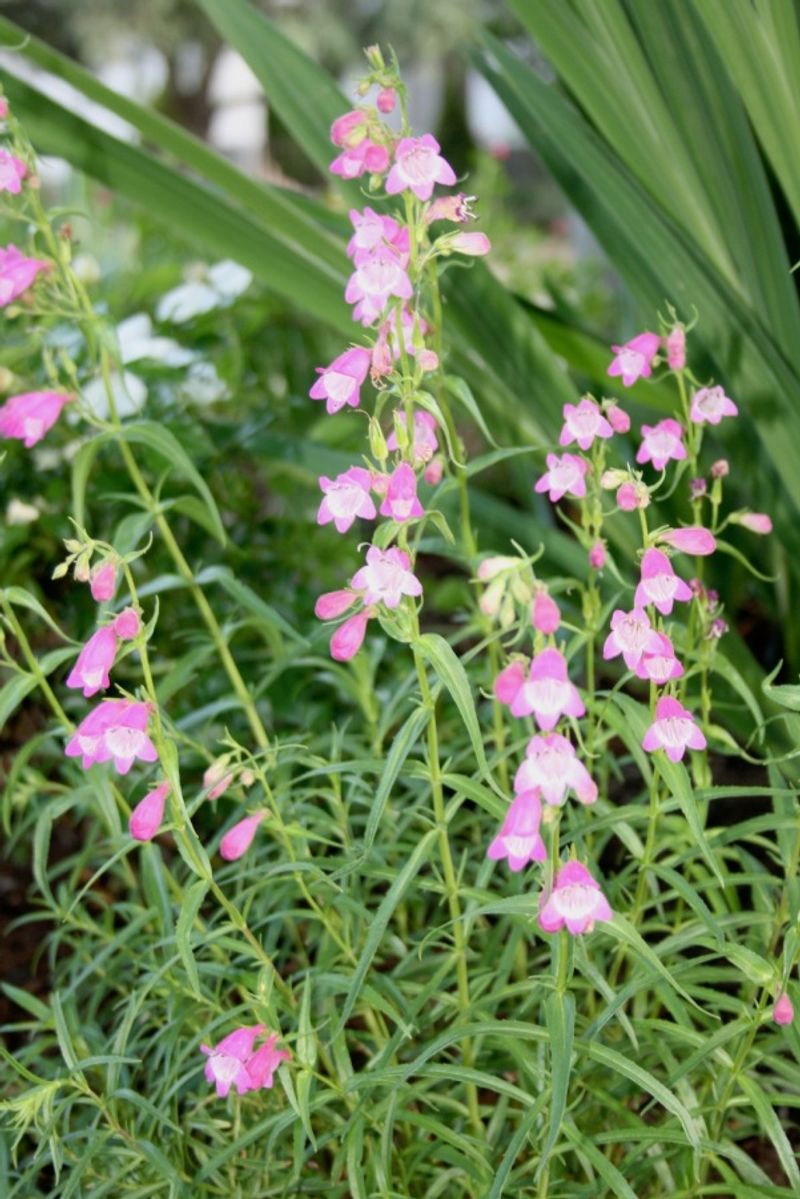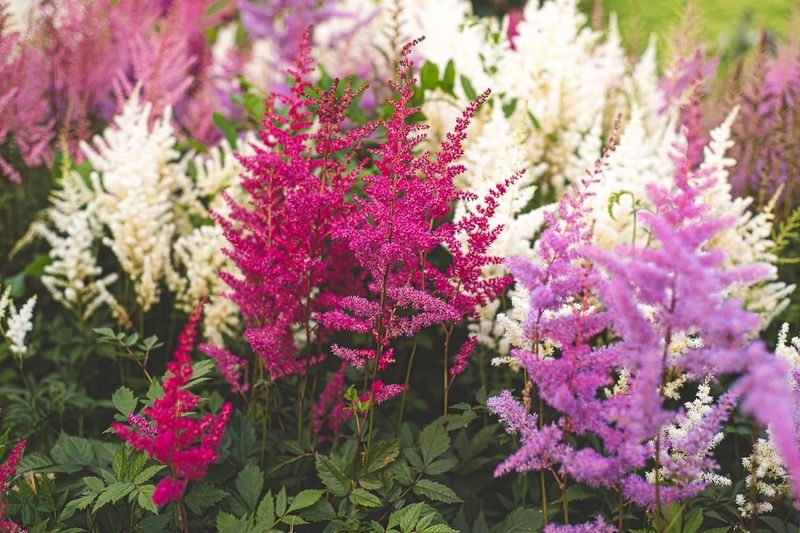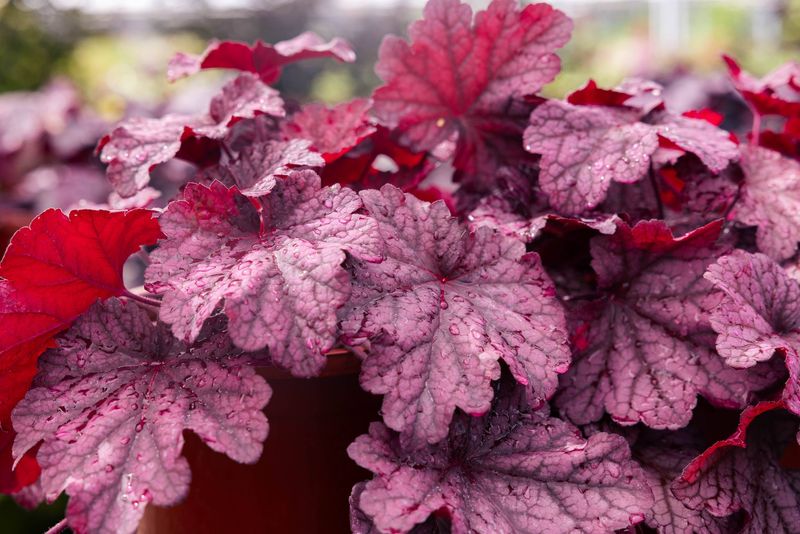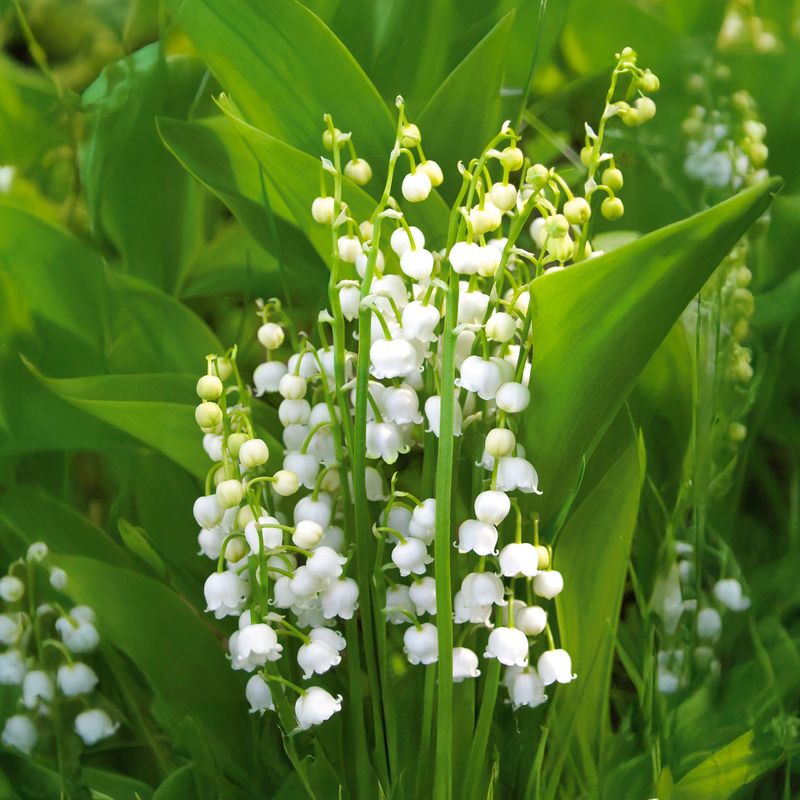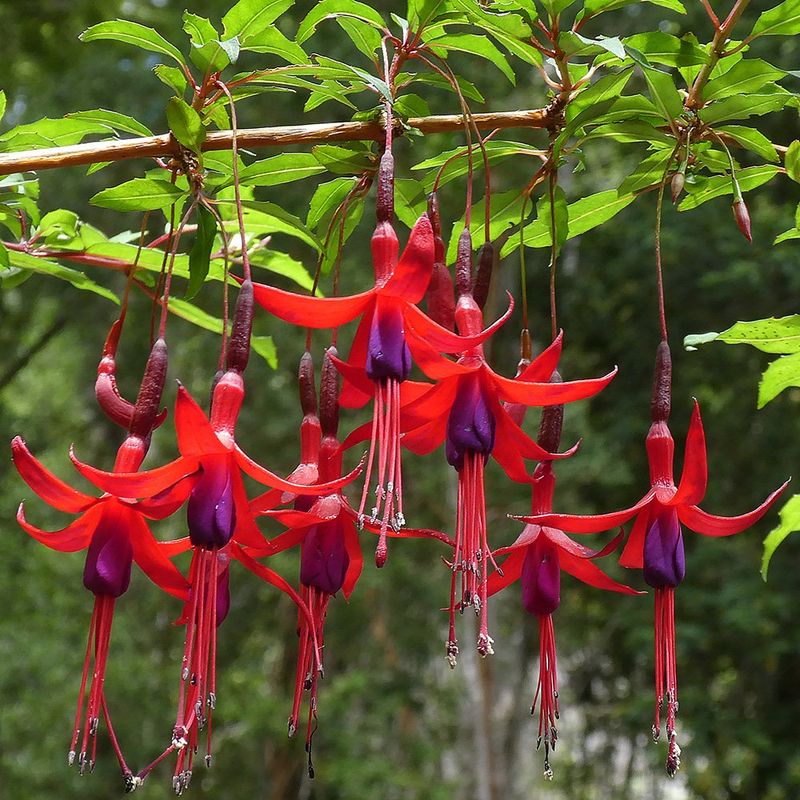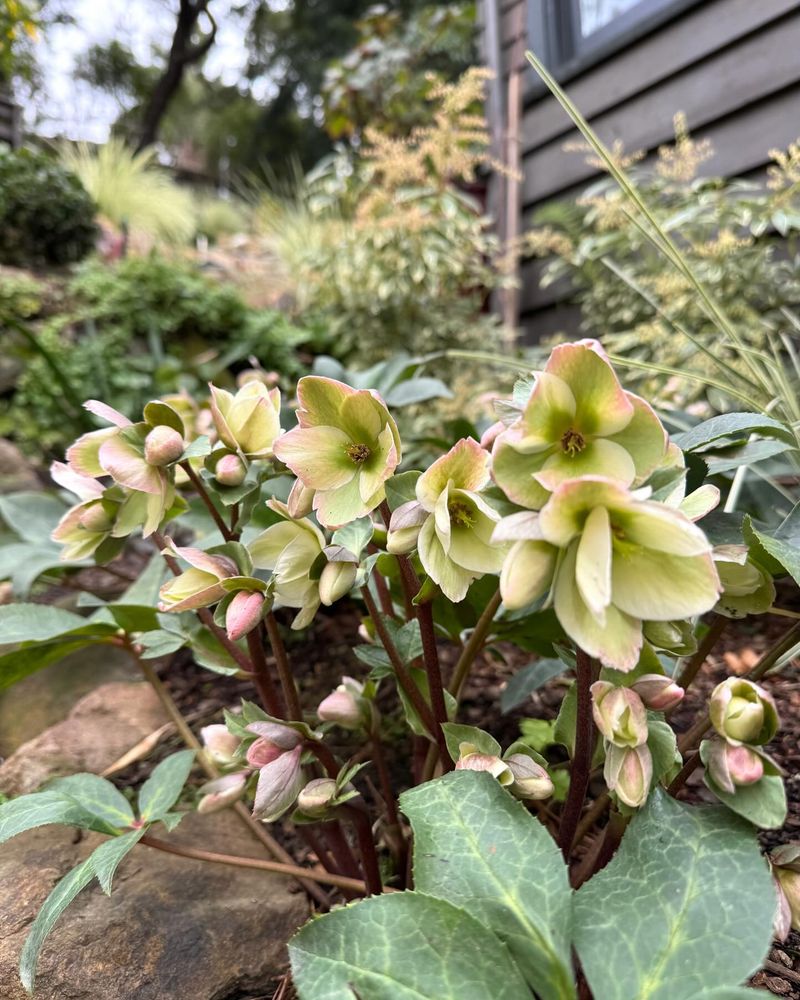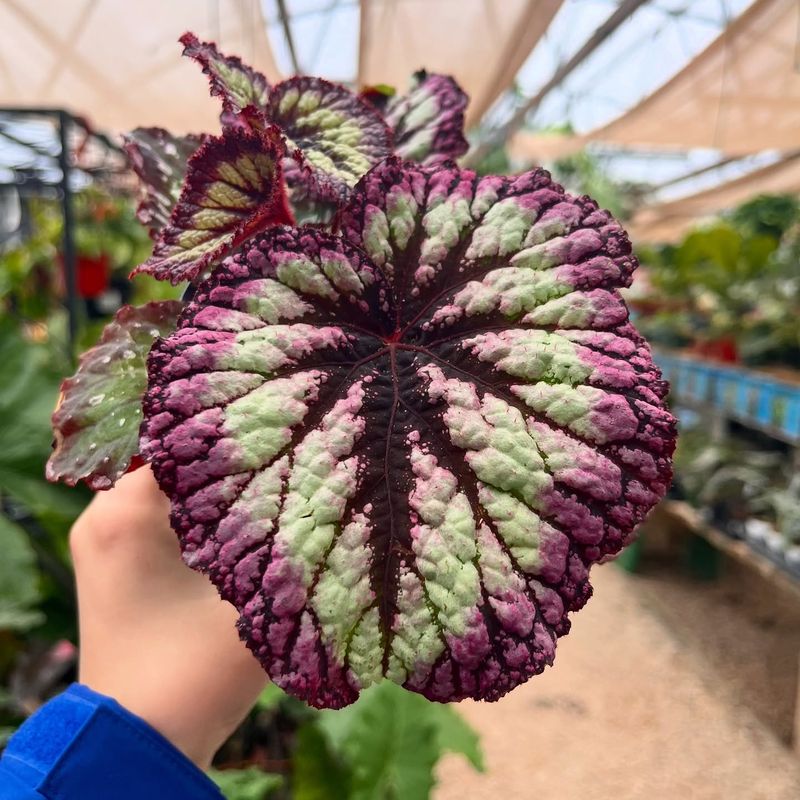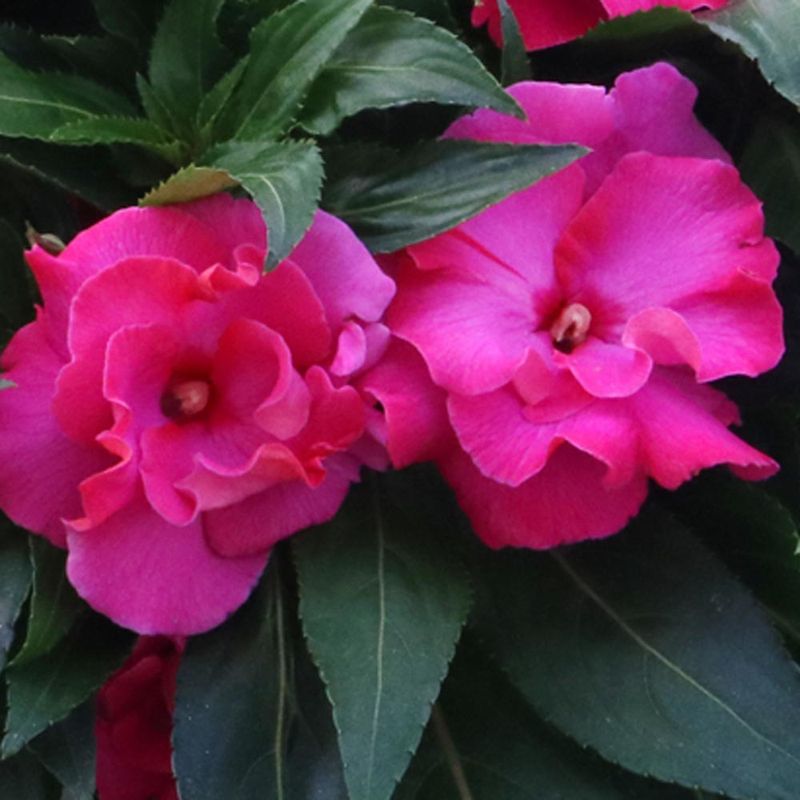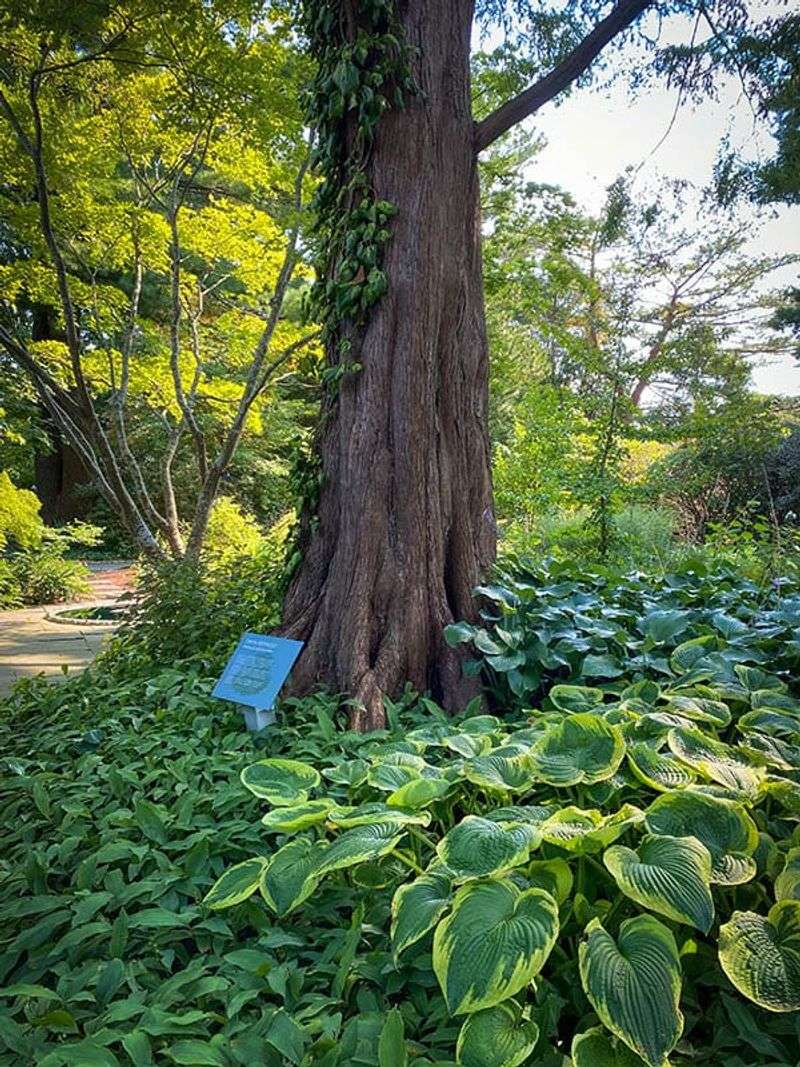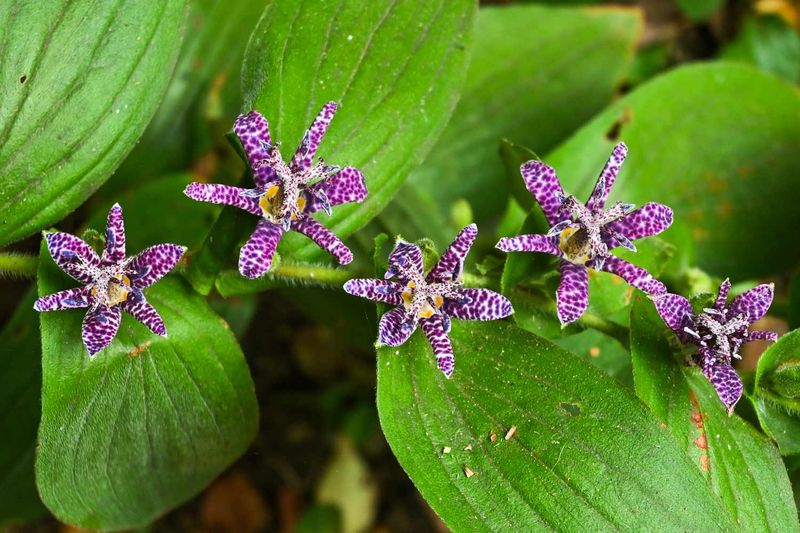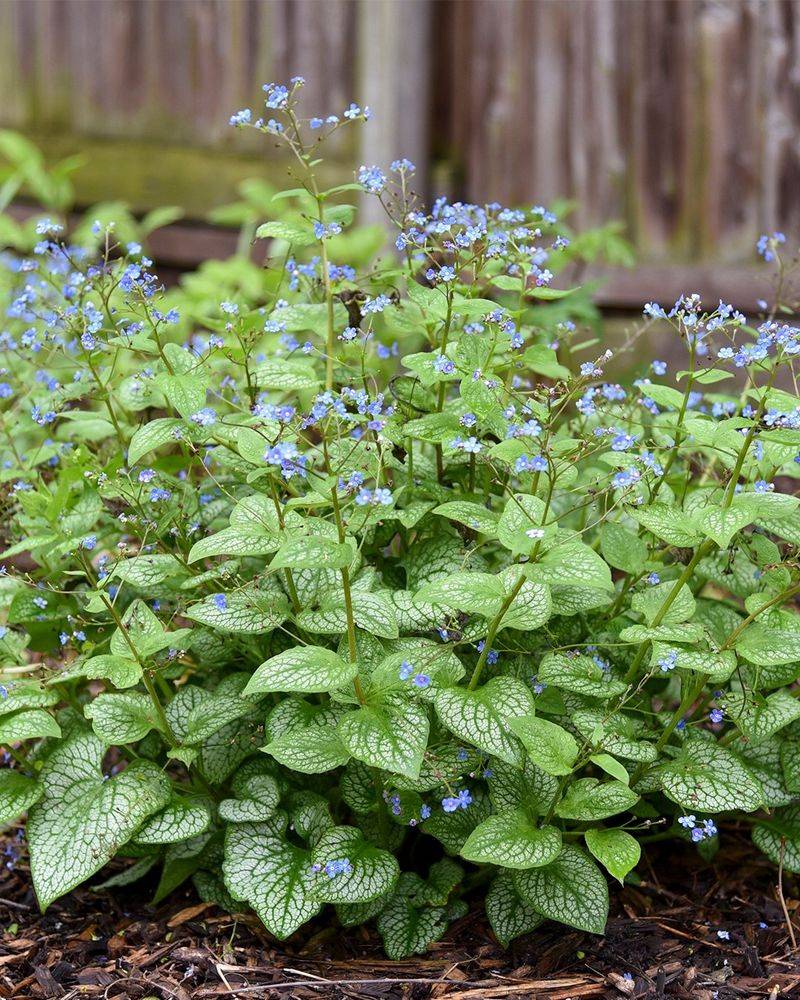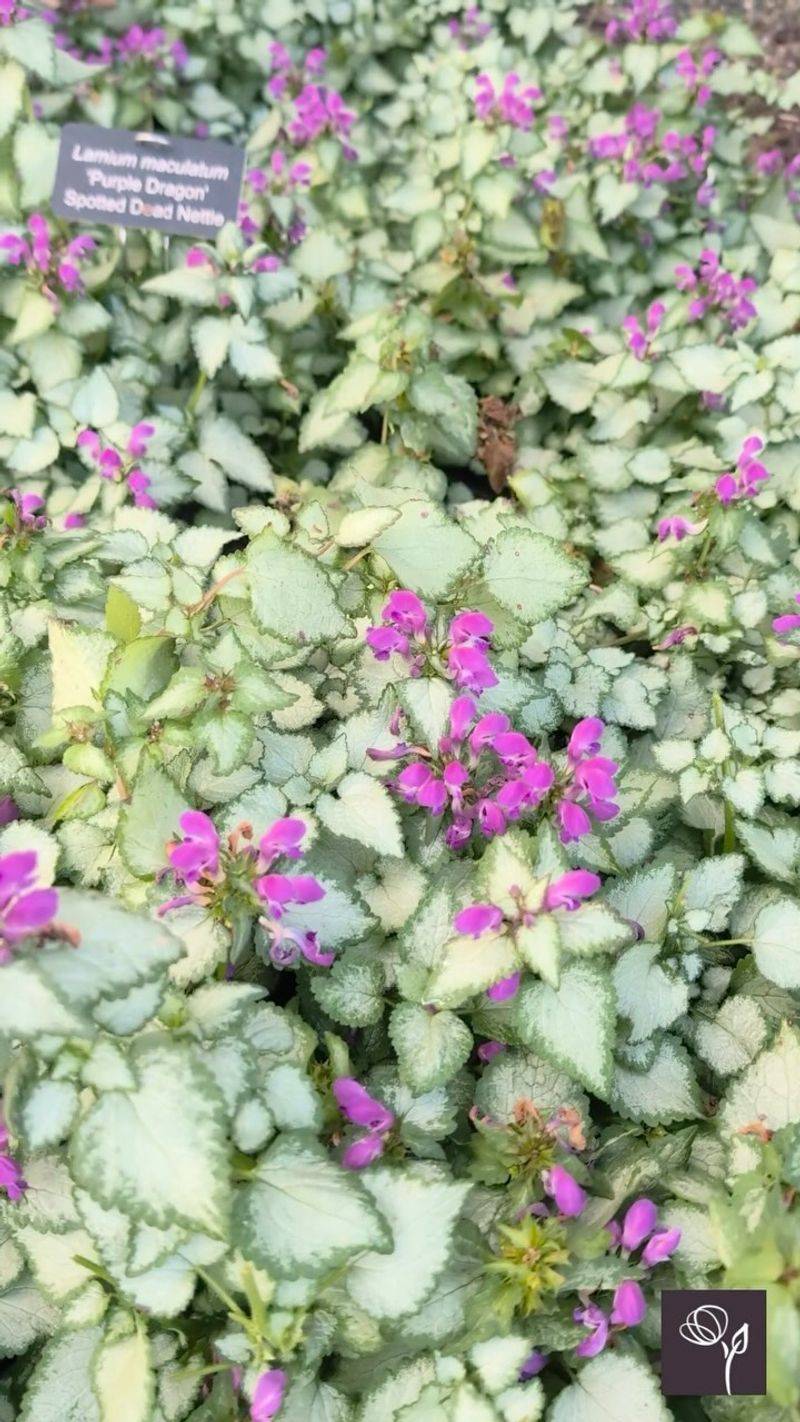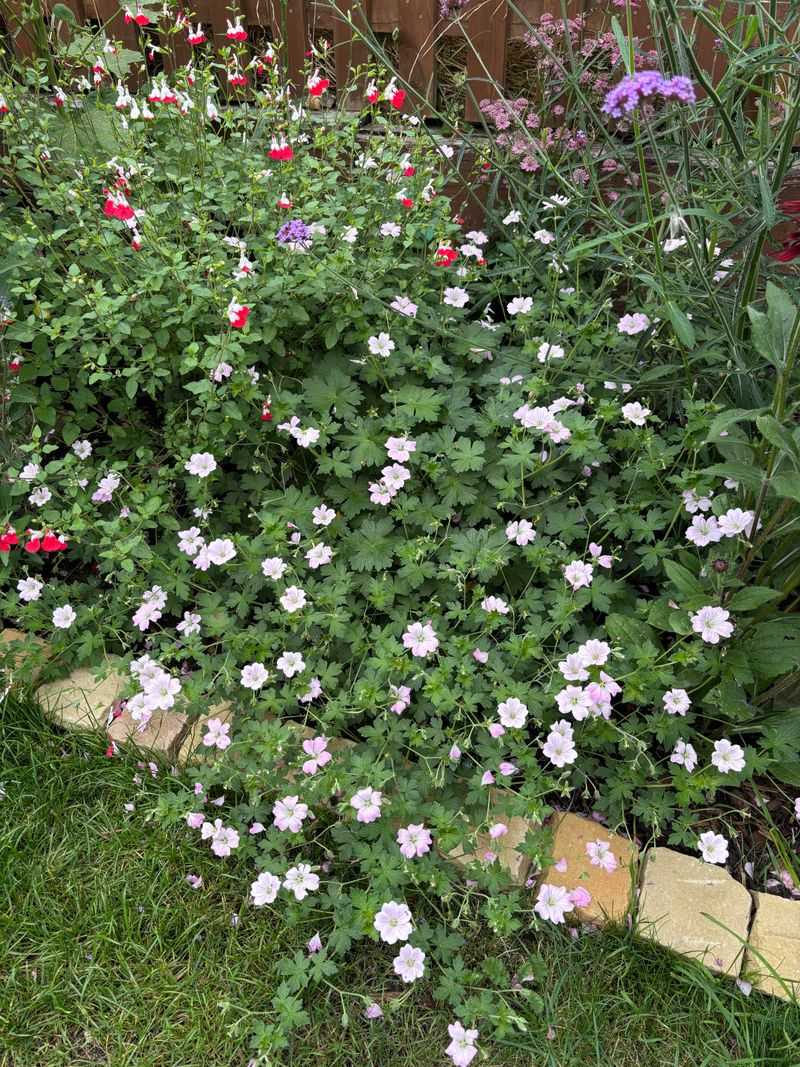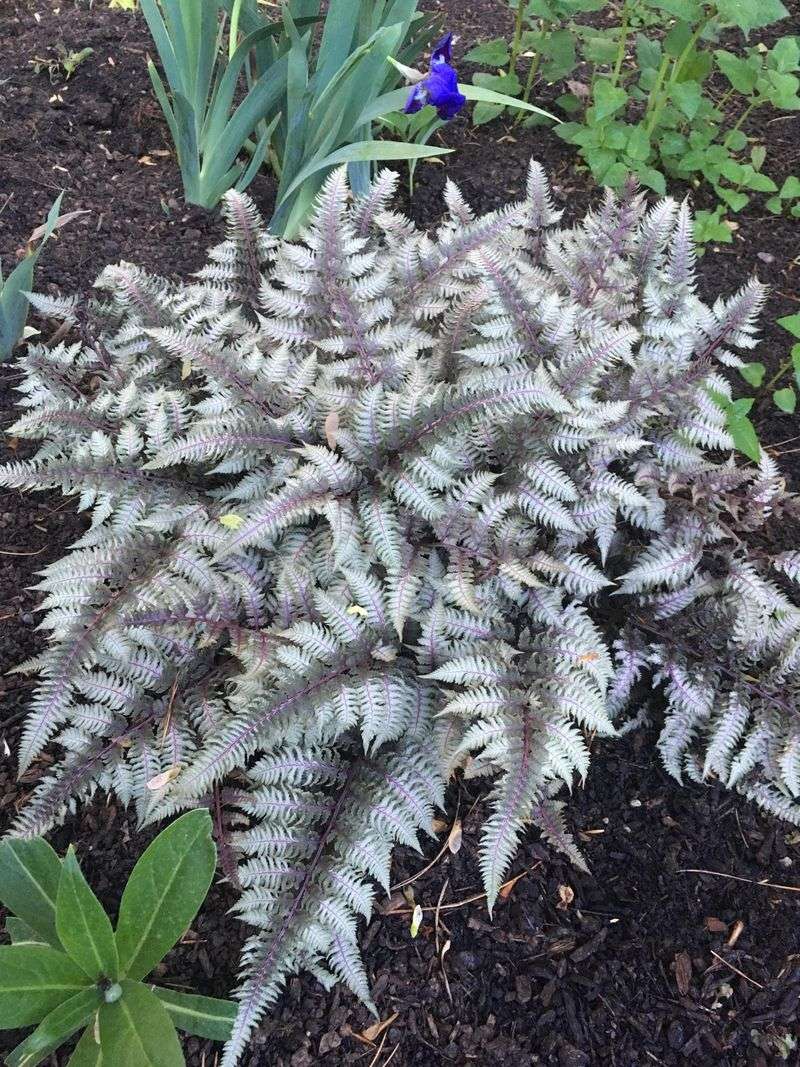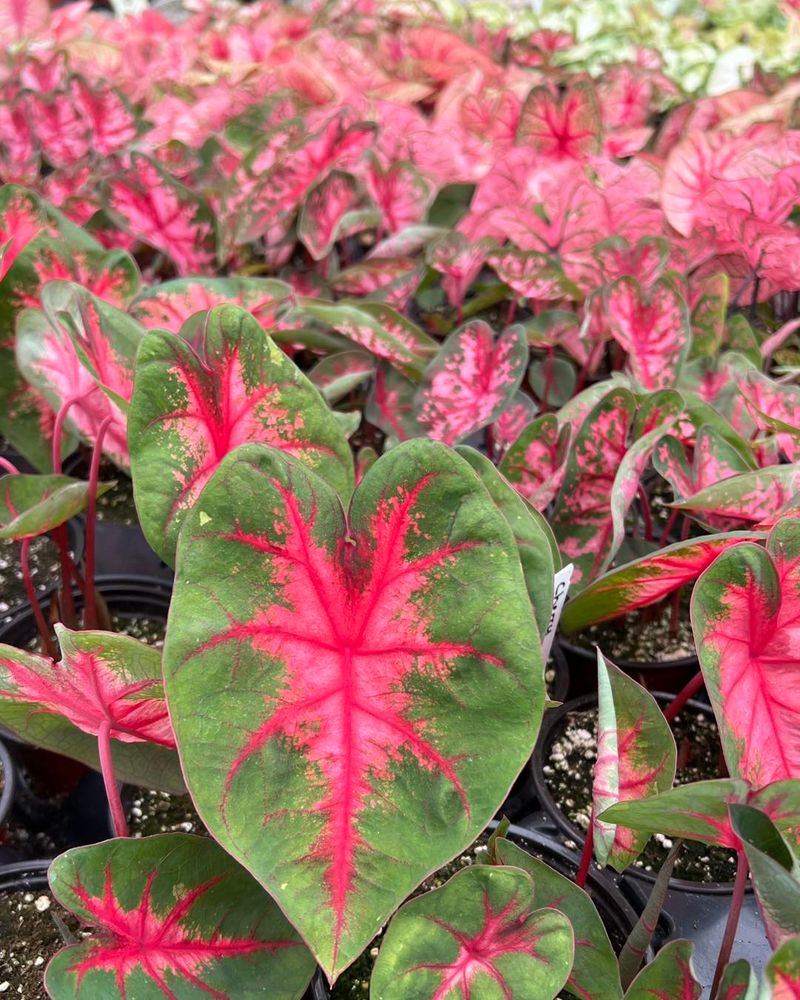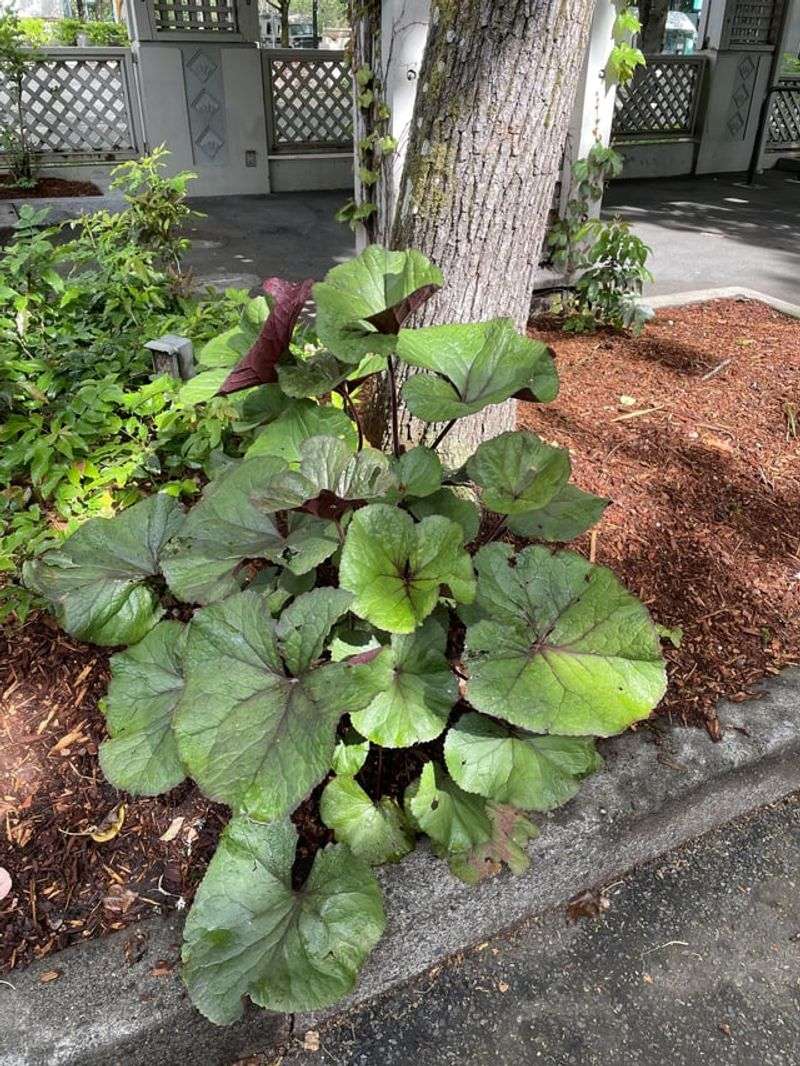Transforming a gloomy alleyway into a vibrant garden oasis might seem challenging, but with the right flowers, even the darkest corners can burst with color. Shade-loving blooms are nature’s answer to those tricky spots where sunlight barely reaches. From delicate woodland natives to exotic tropical treasures, these resilient beauties thrive where others wilt, bringing life to forgotten spaces between buildings or along narrow passages.
1. Bleeding Hearts
Those heart-shaped blooms dangling from arched stems aren’t just romantic—they’re tough cookies in disguise! Bleeding Hearts laugh in the face of deep shade, pumping out those distinctive pink or white flowers when spring rolls around.
Native woodland plants by nature, they’ve evolved to thrive under tree canopies, making them perfect candidates for those brick-lined passages where sun is just a rumor.
Their ferny foliage creates a lush backdrop even after blooming ends, keeping your alley garden looking alive through summer’s heat.
2. Japanese Forest Grass
Morning light catches the golden striped leaves, turning this humble grass into nature’s own light show. Japanese Forest Grass creates waves of brightness that seem to float above the ground, bringing movement to still corners.
The arching habit makes it perfect for softening hard edges of pavement or walls. As seasons change, so does its performance—spring brings fresh chartreuse shoots, summer delivers that signature golden striping, and fall transforms the whole plant into a waterfall of golden-orange that practically glows in dim light.
3. Foxglove
Standing tall like woodland sentinels, foxgloves bring vertical drama to forgotten spaces. Their speckled trumpet flowers climb skyward on sturdy stalks, drawing the eye up and creating the illusion of height in cramped passages.
Bees buzz madly around these beauties, bringing wildlife into urban deserts. Though technically biennials, foxgloves self-seed so enthusiastically you’d swear they’re perennials.
The best part? They actually prefer those dappled light conditions found in tight spaces between buildings, making them ideal candidates for transforming dreary alleys into cottage-garden inspired retreats.
4. Astilbe
Feathery plumes catch even the faintest breeze, dancing above lacy foliage that looks like it belongs in a fairy tale. Astilbes bring movement and texture to stillness, their fluffy flower spires ranging from bold crimson to delicate pink and creamy white.
Unlike sun-worshipping blooms that sulk in shade, these beauties actually prefer it cool and dim. Their root systems appreciate consistent moisture, making them perfect partners for those often-damp alleyways where buildings block evaporation.
Plant them in masses for a cloud-like effect that transforms mundane passages into enchanted pathways.
5. Coral Bells
Those leaves! Burgundy, caramel, silver, or lime—coral bells flaunt foliage so striking you almost forget they bloom. New varieties push the color boundaries further each year, creating living mosaics that brighten the darkest corners year-round.
Tiny bell-shaped flowers dance above the foliage on wire-thin stems, attracting hummingbirds into even the narrowest urban canyons. Coral bells’ compact habit makes them perfect for tight spaces, while their drought tolerance once established means less fussing in hard-to-reach spots.
Group different leaf colors for a stained-glass effect that transforms dull alleyways into living art installations.
6. Lily of the Valley
Sweet perfume wafts through the air each spring when these nodding white bells emerge. Lily of the Valley might look delicate, but don’t be fooled—these woodland natives are tough-as-nails spreaders that colonize difficult spots where other plants surrender.
Their glossy green leaves form a tidy groundcover that suppresses weeds throughout the growing season. Once established, they require minimal care while delivering maximum charm.
Just remember their vigorous nature means they’re best contained by hardscape elements—perfect for those alleyway gardens naturally bordered by foundations and pavement.
7. Fuchsia
Ballerinas in botanical form, fuchsias dangle their bicolor blooms from cascading branches. Those pendant flowers in combinations of pink, purple, white, and red create living jewelry that sparkles even in deep shade.
Hanging baskets of fuchsias transform bland vertical spaces into three-dimensional gardens, adding height without taking up precious ground space. Hummingbirds become regular visitors, darting between the nectar-rich blossoms.
While not all varieties are hardy in colder climates, they’re worth replanting annually for the unmatched elegance they bring to otherwise forgotten alleyway nooks.
8. Hellebores
Winter’s darkness doesn’t stand a chance when hellebores take the stage. These evergreen perennials burst into bloom when everything else sleeps, their nodding flowers in whites, pinks, purples, and even slate-black lasting for months.
Leathery foliage shrugs off poor soil, dry conditions, and deep shade—making hellebores perfect candidates for challenging alleyway gardens. Modern varieties offer upward-facing blooms and speckled petals that look hand-painted by nature.
Plant them where you’ll pass by during winter months when their quiet beauty provides a much-needed reminder that spring always returns.
9. Begonias
Jewel-toned leaves sporting metallic sheens and spiraling patterns make some begonias more about foliage than flowers. Rex varieties create living tapestries with their swirling colors, brightening dim corners without needing a single bloom.
Tuberous begonias, meanwhile, unfurl rose-like flowers in saturated colors that seem to glow from within. Both types thrive in the humid, protected conditions often found in narrow passages between buildings.
Their shallow root systems make them ideal for container gardening in areas where soil quality is questionable—a common challenge in urban alleyway gardens.
10. Columbine
Fairy-like flowers hover on slender stems, their distinctive spurred petals unlike anything else in the garden world. Columbines bring a touch of woodland magic to urban settings, their nodding blooms dancing with every breeze.
Native varieties attract hummingbirds and beneficial insects, creating tiny ecosystems in concrete jungles. Their ability to self-seed means a few plants can eventually colonize difficult spaces with minimal human intervention.
Columbines appreciate the cooler temperatures found in narrow passages, rewarding gardeners with reliable spring blooms when planted in those often-overlooked alleyway gardens.
11. New Guinea Impatiens
Tropical flair meets urban resilience in these shade-loving stunners. Unlike their smaller bedding impatiens cousins, New Guinea types boast larger, showier flowers and often sport variegated or bronze-tinted foliage for double the visual impact.
Their continuous blooming habit from spring until frost means months of reliable color in spots where many flowers fail.
Resistant to the downy mildew that plagued traditional impatiens, these vigorous plants thrive in containers that can be positioned to maximize impact in narrow alleyway gardens. Their water needs make them perfect partners for those naturally damper areas between buildings.
12. Hostas
Nature’s living sculptures, hostas transform shade into an advantage with their magnificent foliage. From tiny blue-green mounds to massive chartreuse giants, their leaves come splashed, edged, and streaked in combinations that catch even the faintest light.
Summer brings the bonus of delicate flower stalks rising above the foliage like botanical fountains. Miniature varieties work beautifully in tight spaces between pavers or steps, while statement specimens become focal points in larger alleyway beds.
Their forgiveness of poor soil and ability to thrive where grass won’t grow makes hostas the backbone of countless shade gardens in challenging urban spaces.
13. Toad Lily
Fall gardens often fade into browns and golds, but not when toad lilies are around! These late-season bloomers save their performance for when most other flowers have taken their final bow, studding their arching stems with orchid-like spotted blooms.
Native to Asian forests, they’ve evolved to thrive in precisely the dappled light conditions found in narrow passages between buildings.
Their exotic appearance belies their tough nature—established plants shrug off neglect while continuing their autumn show. Plant them where they’ll catch eye level attention in otherwise forgotten alleyway gardens during the season when outdoor time becomes precious.
14. Brunnera
Heart-shaped leaves painted with silver constellations make brunnera a standout even without flowers. Modern varieties like ‘Jack Frost’ and ‘Sea Heart’ practically glow in the dark, their metallic foliage reflecting what little light filters into dim alleyways.
Spring brings clouds of tiny blue forget-me-not flowers hovering above the spectacular leaves. Brunnera’s clumping habit means it stays where you plant it—no invasive tendencies to worry about in confined spaces.
Their preference for consistently moist, rich soil makes them ideal candidates for those naturally damper, protected conditions found between buildings in urban settings.
15. Lamium
Silver streaks flash through the foliage of this low-growing groundcover, creating pathways of light in the darkest corners. Lamium’s spreading habit makes quick work of covering difficult ground where grass refuses to grow, choking out weeds in the process.
Pink, purple or white flowers appear in spring, but the real show is the metallic-looking foliage that persists year-round in milder climates.
Also called dead nettle, this European native has none of the sting of its lookalike cousin. Its shallow root system allows it to thrive in the poor, often compacted soils typical of neglected alleyway spaces.
16. Hardy Geranium
Not to be confused with their annual container cousins, hardy geraniums create pillowy mounds of deeply cut foliage that soften harsh hardscapes. Their star-shaped flowers in shades of blue, purple, pink and white appear for weeks, with some varieties reblooming if trimmed back.
Tough as nails once established, these European natives tolerate root competition, poor soil, and varying light conditions.
Their informal spreading habit makes them perfect for naturalistic plantings in urban alleyways where a slightly wild aesthetic feels right at home. Fall brings the bonus of colorful foliage in many varieties, extending their season of interest.
17. Japanese Painted Fern
Silver-frosted fronds flushed with burgundy create living watercolors in the darkest corners. Japanese Painted Ferns bring a touch of woodland elegance to urban spaces, their metallic coloration seeming to capture and amplify what little light filters between buildings.
Unlike some aggressive ferns, these well-behaved beauties stay in tidy clumps, slowly expanding without taking over. Their preference for sheltered locations makes narrow alleyways ideal homes.
Pair them with dark-leaved plants for maximum contrast, or create a silver-themed garden that shimmers even on overcast days when other colors disappear into the shadows.
18. Caladium
Heart-shaped leaves splashed with neon pink, crimson, white, and green turn shady spots into tropical getaways. Caladiums pack more punch per square inch than almost any other shade plant, their paper-thin leaves catching what little light filters down and transforming it into living stained glass.
While not winter-hardy in colder regions, their dramatic impact makes them worth replanting annually in container arrangements.
Their bulbs can be lifted and stored over winter for next season. Group several varieties together in alleyway container gardens for a head-turning display that thrives precisely where sun-loving annuals would struggle.
19. Ligularia
Bold architectural leaves the size of dinner plates make ligularia a statement plant for those spots where you need dramatic impact. Some varieties sport glossy green foliage, while others offer deep purple-black leaves that seem to absorb what little light reaches them.
Tall yellow daisy-like flowers rise above the foliage in mid to late summer, bringing a splash of sunshine to dim passages. Their need for consistent moisture makes them perfect partners for those naturally damper areas between buildings where drainage is slow.
Plant them where their massive leaves can be appreciated up close in otherwise overlooked alleyway gardens.
20. Pulmonaria
Spotted, speckled, and splashed—pulmonaria leaves look like they’ve been flicked with silver paint. Also called lungwort, these European woodland natives bring early spring color to dark corners when their pink buds open to reveal blue flowers on the same plant.
Their low-growing habit makes them perfect for edging alleyway paths or filling front borders beneath taller shade lovers. Legend claims the spotted leaves resembled diseased lungs, hence their common name and historical use as medicine.
Today, we treasure them simply for their ability to brighten dim spaces with minimal care once established.

